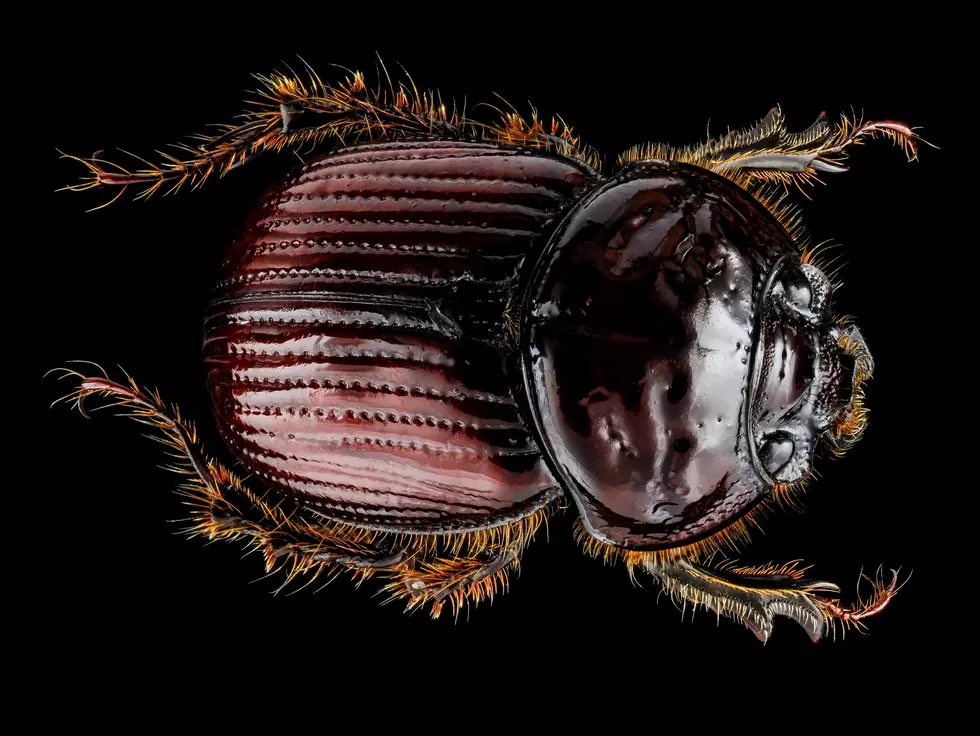
Beware; The June Bug Cometh
In all seriousness. YUCK.
Is there anything worse than being bombarded by these dive-bombing monsters of the aerial-bug world? I mean at least you can HEAR them coming right? Personally, I think that makes them worse. And worse yet; don’t you dare leave the outside light on for more than 5 seconds after dark. Yes, like many night insects, June bugs are attracted to porch and yard lights. To reduce the number of bugs, keep these light sources off during outdoor nighttime recreation if possible. You'll thank me you did.

June bugs, also known as May bugs, are a type of scarab beetle named for the time of year when they are most prevalent. Adult beetles die off in the late summer after reproducing; newly hatched adults reemerge once again the following May or June. By the way did you know their relatives in Egypt were worshipped…. Seriously!?
Scarab Beetles... (I guess if you throw enough shiny blue paint on something…)
These guys are not just a nuisance when their flying either. Their larvae, the white grub, is a nuisance in lawns and gardens. The white, grub-like larva of the June bug lives in soil for up to three years. Grubs have soft, off-white bodies with brownish heads and six well-developed legs. If you notice portions of your lawn thinning or becoming bare, it’s probably these guys.
In addition, these grubs may just create another problem; moles. Yup, moles REALLY love to eat these little guys (How’s that Pumba saying go, “slimy, yet satisfying”). And unfortunately, that means your yard will be full of tunnels. Talk about a mountain, out of a mole hill.
Adult June bugs are typically one half to one inch long and brown to red in color. They are an erratic and possessed crazy uncle earl, with a pilot’s license, no less (for the record I do NOT have or know an crazy uncle Earl that flies) Realistically though, June Bugs are known for their clumsy flight patterns that often cause them to collide with windows. These pests are frequently found clinging to door and window screens.
So how can we avoid our small winged terrors this year. I guess you could always spray poison guard, but I would suggest another path if possible (we don’t want to kill our pollinators after all). Reliable online sources say the first step you could try is trapping the adult insects.
Step 1: Not all June bug infestations are regarded as major enough to require serious remedies. Adults can be trapped with a mixture of 1/2 cup molasses and 1/2 cup water placed in a narrow-necked container. There is also a variety of commercial beetle traps available for purchase that do much the same thing: lure and trap beetles in a container holding a sweet concoction. Trapping adults stops the reproduction cycle, but if you have a large number of grubs, trapping adults won't be sufficient to control the population.
Step 2: Nematodes…. Ugh? Yup fight bugs with… worms. Nematodes are microscopic soil worms that feed on the larvae of various insects. They are increasingly popular as a natural, non-toxic control for various damaging pests. There are many species of nematodes, but for lawn grubs, certain species are preferred. These worms are also a great way to control Japanese Beetle infestations.
Step 3: Go easy on landscape chemicals. The heavy use of surface pesticides can eliminate natural predators of June bugs and their larvae, and heavy applications of fertilizers make for very dense root systems that provide a banquet for grubs to munch on.
Step 4: Make sure your landscape is bird and animal friendly. Larger birds eat adult June beetles, and some birds dig up and eat surface dwelling grubs. In addition, bats are nocturnal feeders that often consume June bugs. And Finally, the presence of small predatory creatures such as toads and snakes can help control June bugs as well.
Seriously though, where are these guys when you need them!?
Iowa’s Top 10 Most Common Snakes
More From Y105





